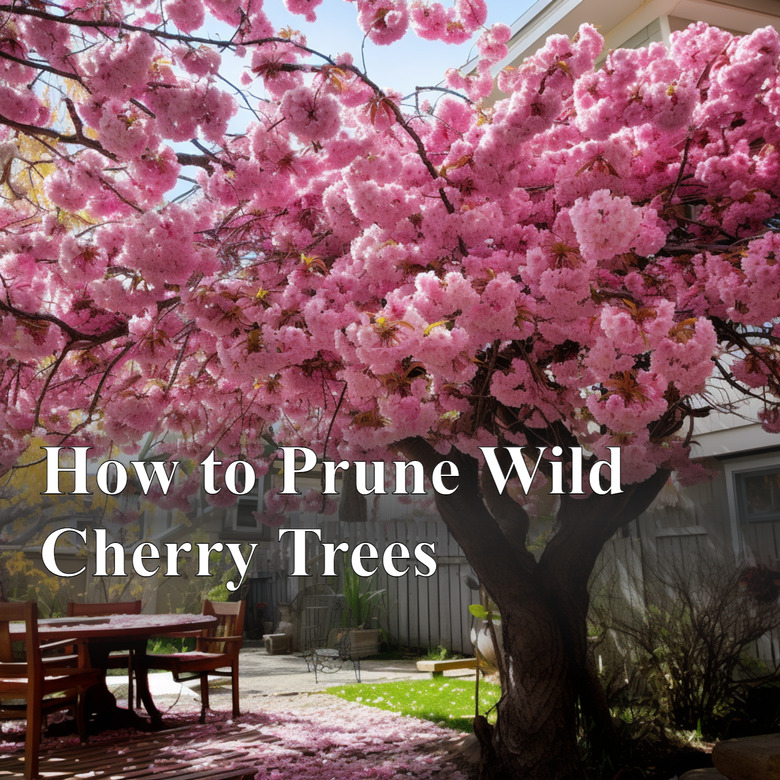How To Prune Wild Cherry Trees
Wild cherry trees (Prunus serotina) are fast-growing deciduous trees which can reach heights of 50 to 80 feet. As long as they grow in a sunny spot, they are versatile and do well in various types of soil. Small white flowers bloom in early spring, followed by reddish-black berries that are edible. Prune wild cherry trees to improve their appearance and make them healthier.
Step 1
Prune wild cherry trees in the late winter or early spring, before the fruit buds.
Step 2
Use sharp pruning tools because they will make the smallest cut possible. Wild cherry trees can heal from small wounds.
- Wild cherry trees (Prunus serotina) are fast-growing deciduous trees which can reach heights of 50 to 80 feet.
Step 3
Climb a ladder to get a better idea of the condition of branches and limbs on the inside canopy of the tree. Remove a few from the middle to allow sunlight and air circulation. Cut them at the V-shaped connection to the main trunk of the tree.
Step 4
Cut down shoots that grow from the ground, next to the main trunk of the wild cherry tree, with clippers. They are called water sprouts because they will take nutrition and moisture from the blossoms and leaves.
Step 5
Remove dead, diseased or weak limbs with a pruning saw. Make the cut at the point (or node) where the damaged limb meets with a healthy one.
- Climb a ladder to get a better idea of the condition of branches and limbs on the inside canopy of the tree.
- Cut down shoots that grow from the ground, next to the main trunk of the wild cherry tree, with clippers.
Step 6
Rub alcohol or an antiseptic on pruning tools when removing diseased, damaged or dead branches. This will ensure they are clean between each cut and lessen the likelihood of spreading disease.
Step 7
Prune wild cherry tree limbs that are growing at an angle smaller than 60 degrees. These may be too weak to withstand the weight of fruit.
Wild Cherry And Chokecherry Trees And Are They The Same?
With an average height of 20 to 30 feet and a spread of 15 to 25 feet, chokecherry is the smaller of these two Prunus species. It produces frothy, long clusters of fragrant, white flowers in spring. The tree's extremely tart berries are pea-size and turn from red to black as they ripen. Growing wild in the eastern parts of North America, wild cherry is also known as black cherry. It is much taller than chokecherry, growing up to 80 feet tall and developing a pyramid shape as it reaches maturity. Whether in the wild or planted in a yard, chokecherry is less able than wild cherry to stand up to the heat of a Mediterranean climate. If you live in a subtropical climate, wild cherry is the better choice, but it's important to have room for the tree, which is almost twice the size of chokecherry. A balanced fertilizer contains equal portions of nitrogen, potassium and phosphorus.
- Rub alcohol or an antiseptic on pruning tools when removing diseased, damaged or dead branches.
- Whether in the wild or planted in a yard, chokecherry is less able than wild cherry to stand up to the heat of a Mediterranean climate.
Things Needed
- Clippers
- Loppers
- Pruning saw
Tip
Wear gloves for safety.
